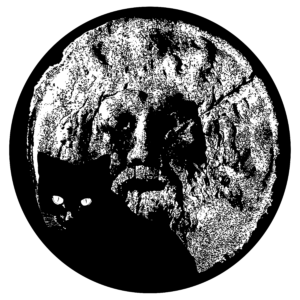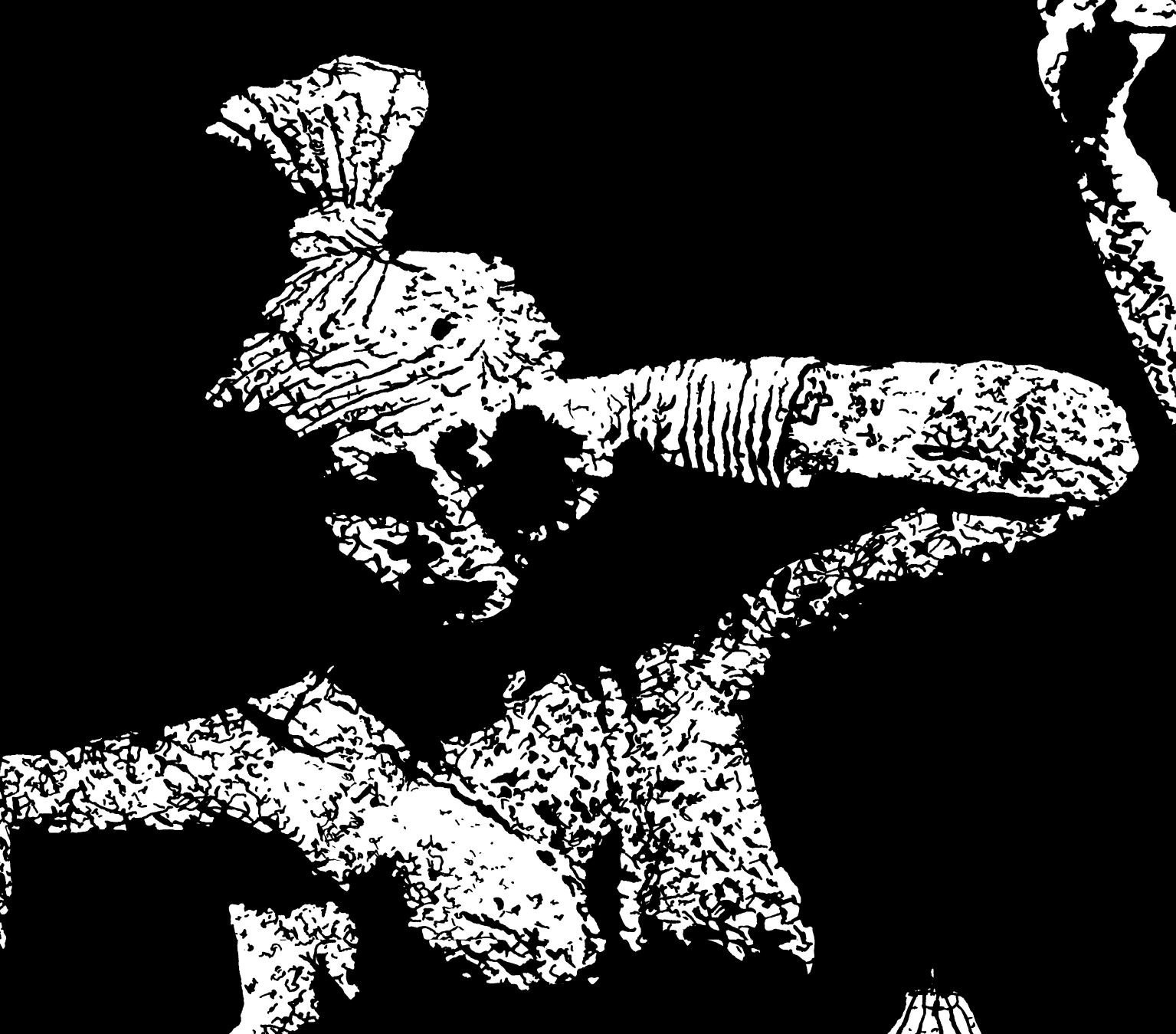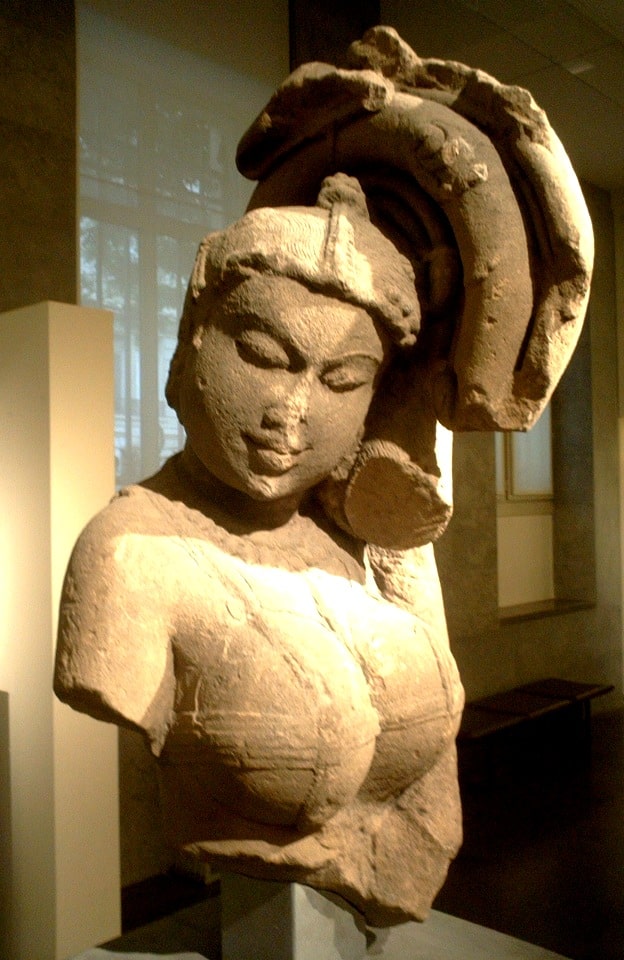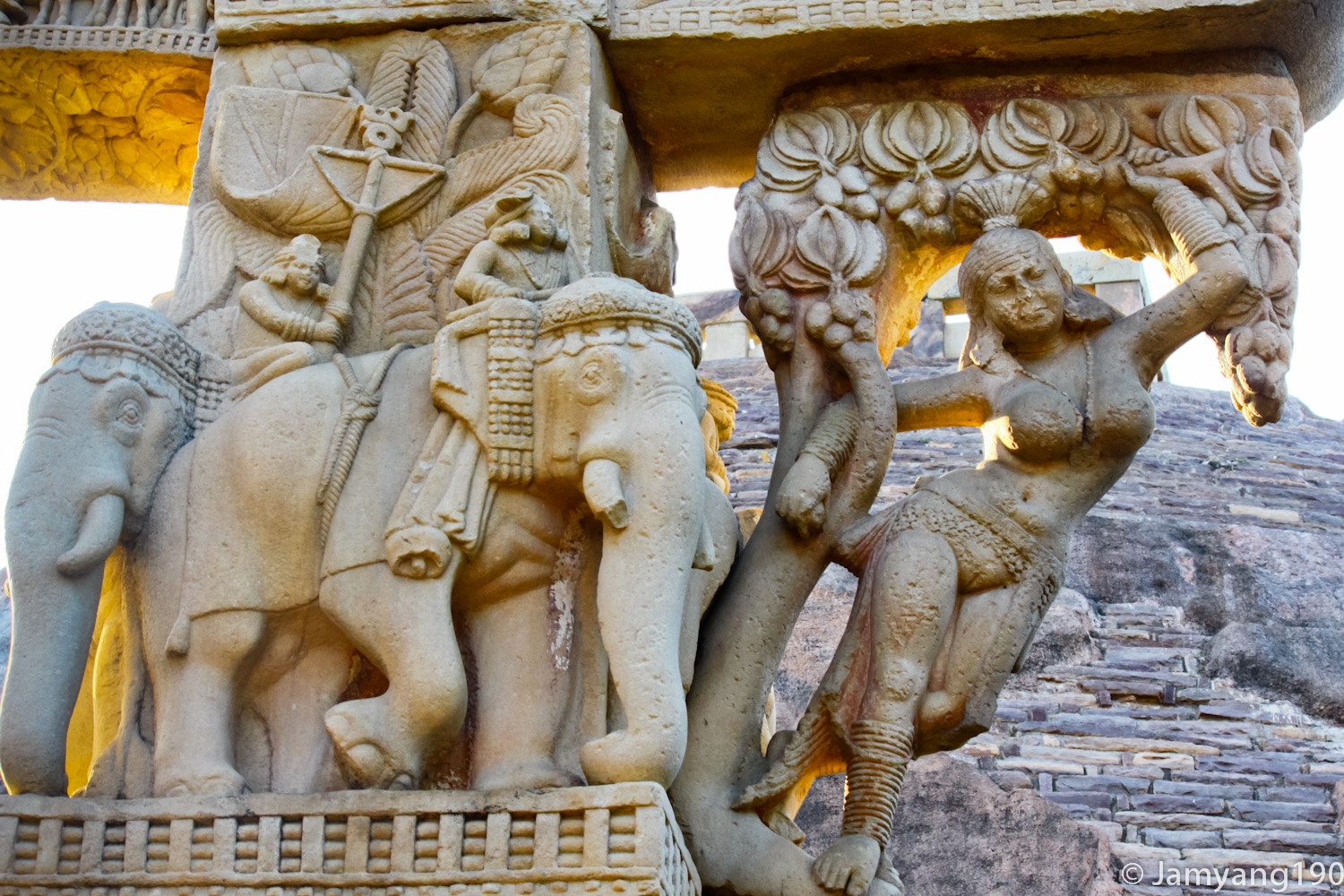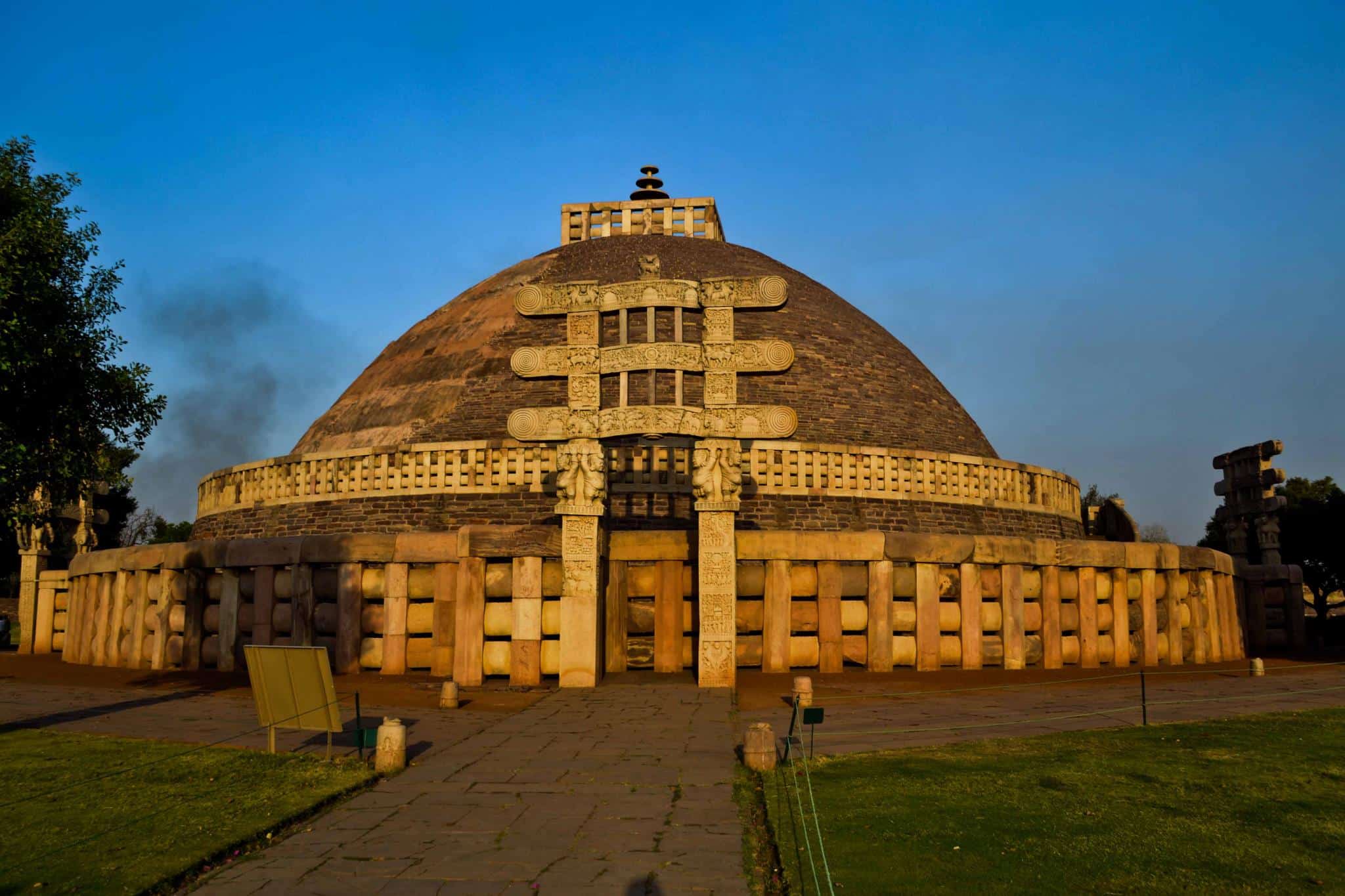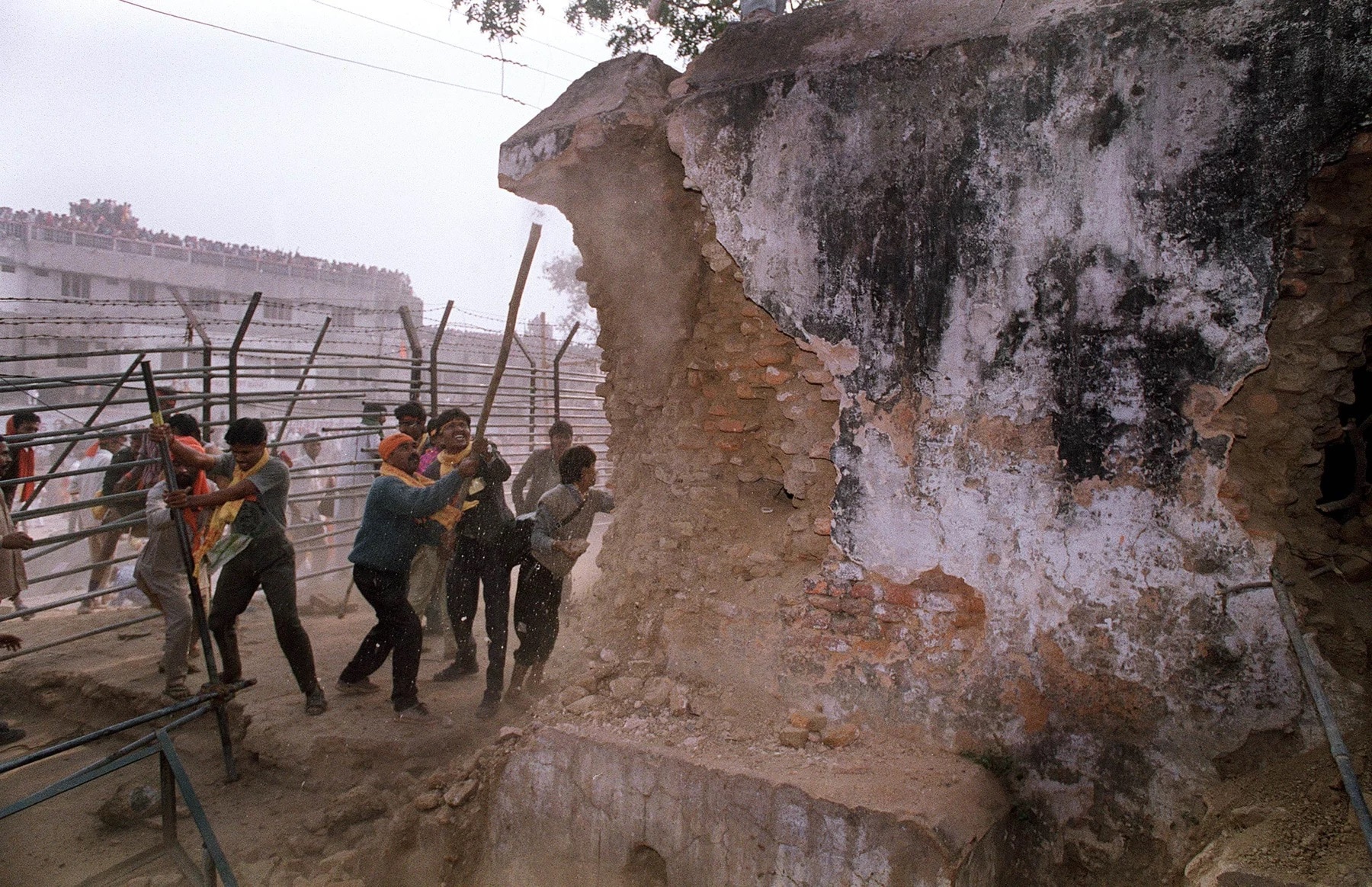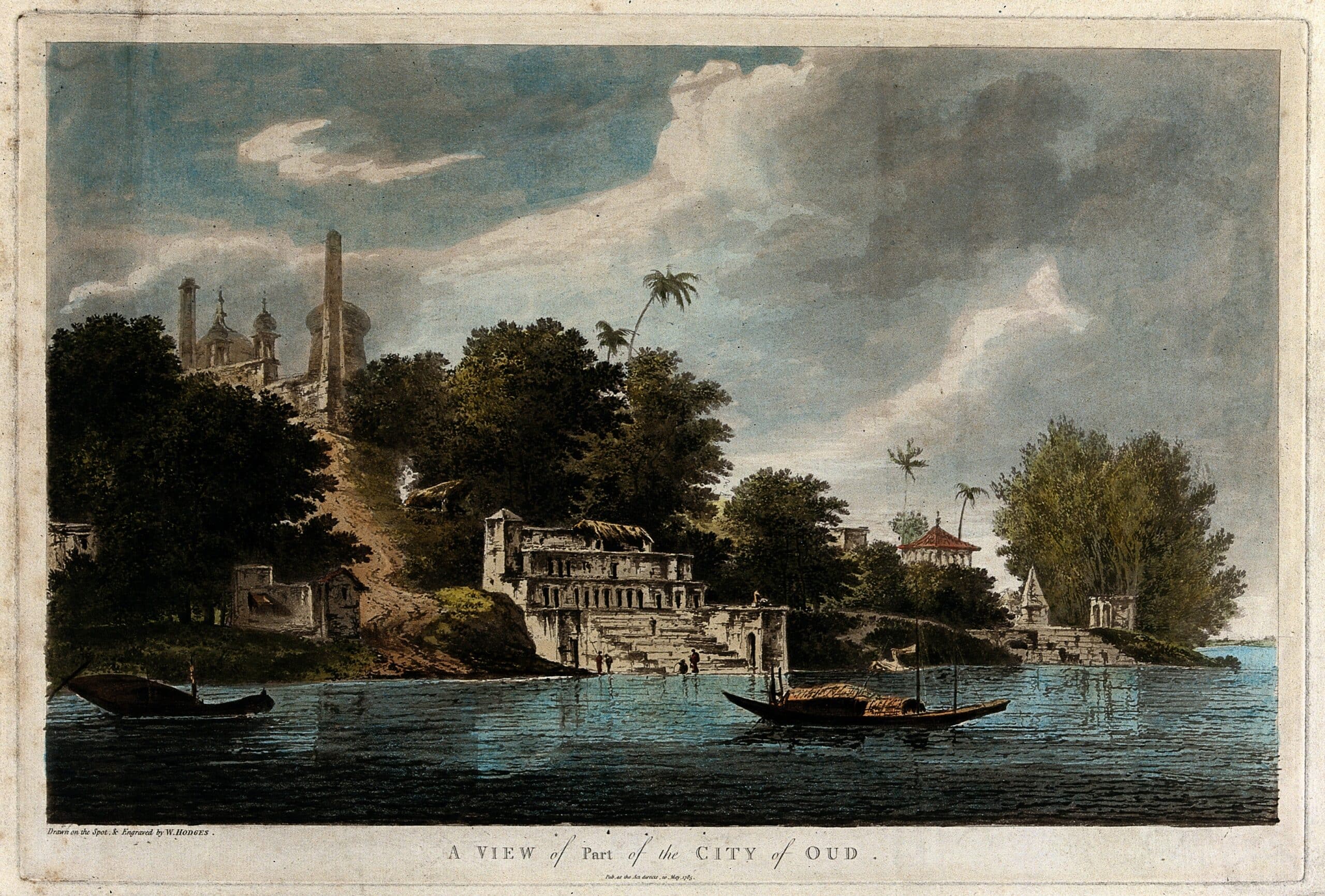“Ayodhya”, Alexandre Mitchell, 2023 (50 x 70 cm, encre de Chine)
La violence et la haine naissent toujours de l’extrémisme religieux : la démolition de la mosquée Babri d’Ayodhya en 1992 a entraîné un cycle de violence sans fin et l’érosion des valeurs communautaires fondamentales et des institutions démocratiques de l’Inde.
La ville d’Ayodhya est l’illustration parfaite d’un paysage sacré à multiples strates et ce depuis l’antiquité. Elle a été le témoin d’une pléthore de pèlerinages religieux interconnectés aux dieux hindous, mais comprend également des structures bouddhistes et, depuis au moins 1529, une importante présence musulmane avec la mosquée de Babri.
En 1992, cette mosquée, qui porte le nom de l’empereur moghol Babur, fut sauvagement démolie par une foule de milliers d’émeutiers, au motif qu’elle se trouvait sur un temple qui marquait le lieu de naissance du dieu hindou Rama. À l’époque, aucune base archéologique ne permettait de prouver ou d’infirmer cet argument, mais les émeutiers sont allés de l’avant, affirmant que l’archéologie et l’histoire étaient de leur côté, et ont préparé l’émeute et la future démolition pendant de nombreux mois.
Tous les instigateurs étaient membres du parti au pouvoir en Inde, et prônaient l’hindutva, une idéologie qui met l’accent sur l’hégémonie de l’identité, de la culture et de la religion hindoues en Inde. Cette idéologie prône également une supériorité vis à vis des autres ethnies ou minorités. Ils étaient également liés à des groupes extrémistes tels que le VHP (Vishwa Hindu Parishad) et le groupe paramilitaire RSS (Rashtriya Swayamsevak Sangh). La destruction de la mosquée a été un tournant dans l’histoire récente de l’Inde car elle marque la montée en puissance de l’idéologie hindutva.
Mais la destruction de la mosquée de Babri a également été un tournant dans le radicalisme de la politique indienne et a conduit à de nombreux actes de violence communautaire comme les massacres de musulmans au Gujarat en 2002. Et ce n’est pas tout, comme l’a écrit R. Gupta dans un article récent, « Près de 30 ans après la destruction de la mosquée par des fanatiques hindous, le jugement du tribunal confirme les craintes pour l’avenir de l’Inde« . En effet, le 30 septembre 2020, un tribunal spécial indien a acquitté les 32 accusés de complot visant à démolir la mosquée en 1992, tous des hauts responsables du BJP.
Cette situation est d’autant plus tragique que sous la mosquée se trouvaient peut-être des vestiges bouddhistes et non hindous. Toutefois, personne n’a envisagé cette option sérieusement puisque le bouddhisme a été éradiqué en Inde par la conquête islamique et disparaît complètement au 12e siècle; aujourd’hui, le bouddhisme n’a plus de voix, en Inde. Cette idée est représentée dans mon dessin sous la forme d’un stupa à l’envers. La Buddha Education Foundation d’Udit Raj a soutenu sans succès que la structure fouillée par l’Archaeological Survey of India en 2003 est un stupa Bouddhiste détruit pendant et après l’invasion musulmane de l’Inde.
Compte tenu des nombreux stupas qui ont effectivement été détruits à l’époque et du fait des nombreux vestiges de ce type à Ayodhya, ainsi que des preuves écrites de différentes époques à ce sujet, peut-on penser que la destruction et les émeutes qui ont suivi auraient pu être évités grâce à une résolution bouddhiste ?
En fin de compte, et c’est là le véritable sujet de mon dessin, il n’y a qu’un seul être bienveillant et désintéressé dans ce groupe. Il s’agit de la yakshi, l’esprit féminin de la nature que l’on trouve dans les mythologies religieuses hindoues et bouddhistes, associée aux bois sacrés de l’Inde. Cette belle jeune femme, protectrice liminale, est souvent présente dans l’art indien, associée à l’arbre d’Ashoka et représentée comme gardienne dans les temples bouddhistes, hindous et Jain. Elle est un symbole de bonté et de fertilité aux quatre coins du sous-continent indien, et elle se dérobe ici face à la frénésie religieuse, la haine et la violence.
Pour en savoir plus
Ayodhya (Wikipedia) – Sanchi (Wikipedia) – Stupa (Wikipedia) – Hindutva (Wikipedia) – Lord Ram birthplace (Wikipedia) – Ayodhya dispute or the disputed land (Wikipedia) – Babri Masjid (Wikipedia) – Yakshi (Wikipedia)
Archéologie
“Ayodhya’s sacred landscape: ritual memory, politics and archaeological ‘fact’”, Shaw, J., Cambridge University Press, Jan 15, 2015 | online
Ayodhya archaeology issues (Wikipedia)
Les actions judiciaires
“The Babri Masjid verdict was a dark day for India”, By Rahila Gupta , Friday, 2nd October 2020 | online
“Babri Mosque’s demolition remembered as ‘Black Day’ for Indian democracy, On Dec. 6, 1992, Hindu hardliners demolished 16th century Babri Mosque in northern Indian city of Ayodhya”, Anadolu Agency Staff, Dec 6, 2022 | online
“Buddhist body lays claim to the disputed Ayodhya site”, by Nitish K Singh, Sunday Guardian, Jan 16, 2011. | online
“No, the Supreme Court did not uphold the claim that Babri Masjid was built by demolishing a temple” by Shoaib Daniyal, Nov 11, 2019 | online
